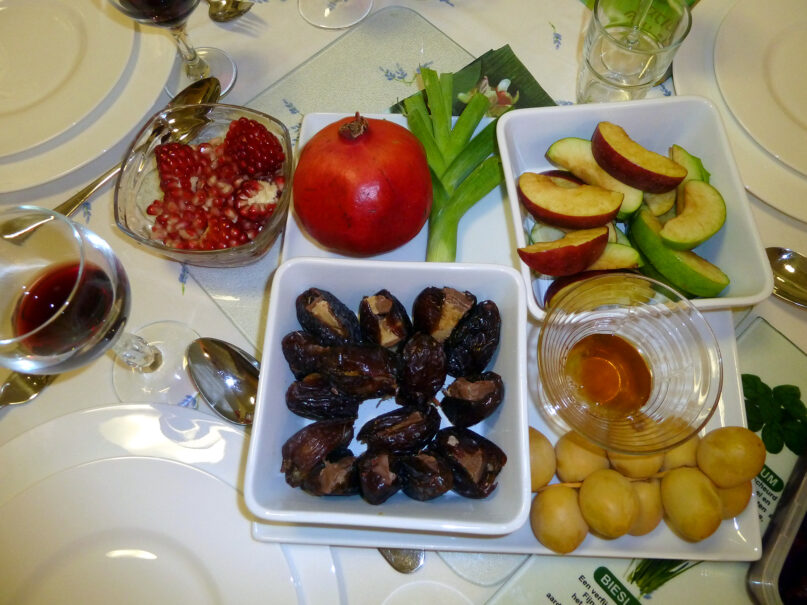(RNS) — Nearly a decade ago, Laurie Moskowitz and her family stopped attending their Washington, D.C., synagogue’s service on the eve of Rosh Hashana, the Jewish new year. Instead, for the past nine years, the family has opted for a Rosh Hashana Seder, the meal traditionally celebrated by Jews each spring at Passover.
“When I first did this, I thought, ‘This is awesome,’ It brings a new meaning to it,” said Moskowitz, a political consultant, the mother of two boys and a member of Adas Israel Congregation in Washington. “It’s become fun and popular with our friends. It’s great to promote something that gives meaning to the holiday.”
It turns out that a Seder on Rosh Hashana is not an oxymoron. During a 2011 stay in Israel, Moskowitz and her family discovered the practice is popular among Jews of Middle Eastern descent.
Now, thanks to the widespread closures of non-Orthodox synagogues because of the COVID-19 pandemic, more American Jews are being introduced to the at-home ritual. Performed without need for clergy, the ritual meal can be held indoors or out, with a limited number of people and shared on Zoom with distant family members or friends.
READ: Shofar lessons are becoming a pre-holiday necessity in the age of coronavirus
Earlier this month, rabbis in the Conservative movement, the second-largest American Jewish group, issued a 41-page Rosh Hashana Seder manual (they did not call it a “haggadah”) available to download. It includes the traditional Torah passages read in synagogues on Rosh Hashana, in addition to prayers, songs and discussion prompts on the theme of starting over.
Reconstructing Judaism, a smaller movement, has also posted resources for what it calls “The Other Seder.” The Reform movement has a page devoted to it, and multiple websites abound in Seders for Rosh Hashana.
The liturgy is said over a plate of symbolic foods: apples and honey, to sweeten the new year; pomegranate seeds, which are suggestive of fertility; and a fish head, to symbolize the desire to be heads rather than tails. This part of the Seder may feel most like the Passover version, which uses different symbolic foods (the parsley dipped in salt water to resemble tears; the horseradish or bitter herbs, a reminder of the toll of slavery.)
Moskowitz plans to make deep-fried black-eyed pea fritters, which she said is a traditional Seder dish in her home. Just as Southerners eat black-eyed peas to celebrate the secular new year, Moskowitz said she will be using the legume to mark the Jewish new year, using a Senegalese recipe for what’s known as “accara.”
A friend usually brings a leek tart, because leeks (or chives, and scallions) represent the hope that enemies will be “cut off.”
“For us, it’s fun,” Moskowitz said. “It helps give a little bit of interest to your holiday menu, if you’re looking to mix it up a bit.”
Although the pandemic spurred this year’s interest in Rosh Hashana Seders, Rabbi Sarit Horwitz, one of the authors of the Conservative movement’s Rosh Hashana Seder, said the word “coronavirus” doesn’t appear in the text of the Seder she wrote. The intent is to introduce another option for celebrating the holiday for years to come.
“This is not a coronavirus Seder,” said Horwitz, who leads Beth Sholom Synagogue in Memphis, Tennessee. “This is a Seder we hope will be meaningful for people to use at various points.”
But it is also an effort to help Jews engage more deeply with their tradition at a time when most American Jews will be passively viewing services via Zoom.
“For the High Holidays, most people’s experience is just showing up to a place that this year they’re not able to show up to,” said Rabbi Sarah Krinsky, who helped compile the Conservative movement Seder. “We wanted to think of a way for people to access the liturgy and themes of the day but from their own home in a context that makes sense this year.”





